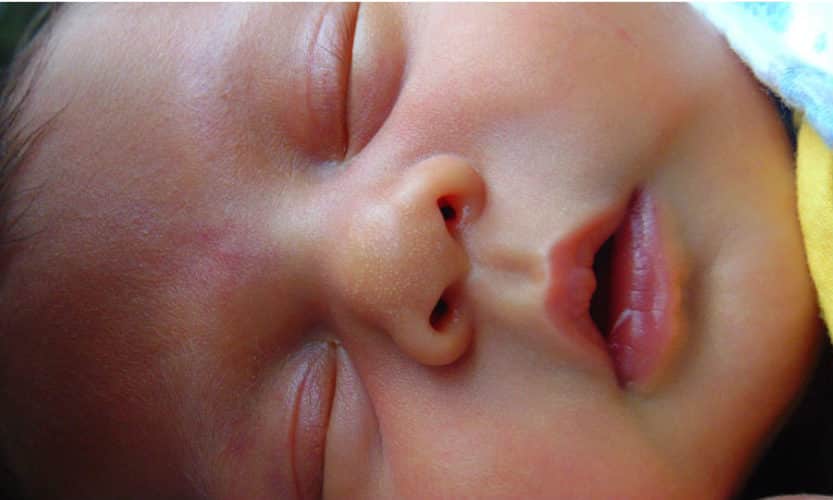To learn more about eczema, go to Eczema and Babies.
There are many conditions associated with eczema. Research seems to show a link between eczema in a young baby with the appearance of different allergies later in life. For example, hay fever (rhinitis) in 30% of cases and asthma in 50% (based on specific authors). Today we know that if we control eczema at a young age (when it starts to appear), you can reduce the risks that the situation will evolve to other conditions.
Children who have more sensitive skin can react more strongly to some allergens (mites and some foods) than babies in general.
Don’t forget that eczema has an emotional and psychological aspect. You might be a parent who has eczema and noted that when stressed, you may have a severe outbreak. For children, moving to a new home, the arrival of a brother or sister and starting school are examples of stresses they may feel, leading to outbreaks.
Clinical Manifestations of Eczema in Newborns
Parents often consult when they see that their child has dry skin or red rashes. Given that eczema is associated with skin hyperreactivity, this is how a baby’s eczema outbreak may look.
It often starts with very dry skin, which is more prevalent when the weather is dry or when you heat the home during colder seasons:
- Dry and often rough skin starting on their cheeks. It can rise or peel (desquamate, squamate);
- Red rashes in skin folds associated with dampness. This can be the next, arm extensors and even their head due to heat loss
- Tiny papules, vesicles, swelling that can burst and have a yellowish discharge that turns into a crust (yellow serous fluid)
- Itching can become intense, which can lead to scratching or discomfort for the baby. This can make them irritable and have trouble sleeping
We often find red rashes on their cheeks, around their mouth, neck, forehead, scalp, chest and joint folds (elbows, knees, wrists and ankles). The rash can also appear all over their body.
To learn about ways to prevent eczema, read How to Prevent Eczema.


